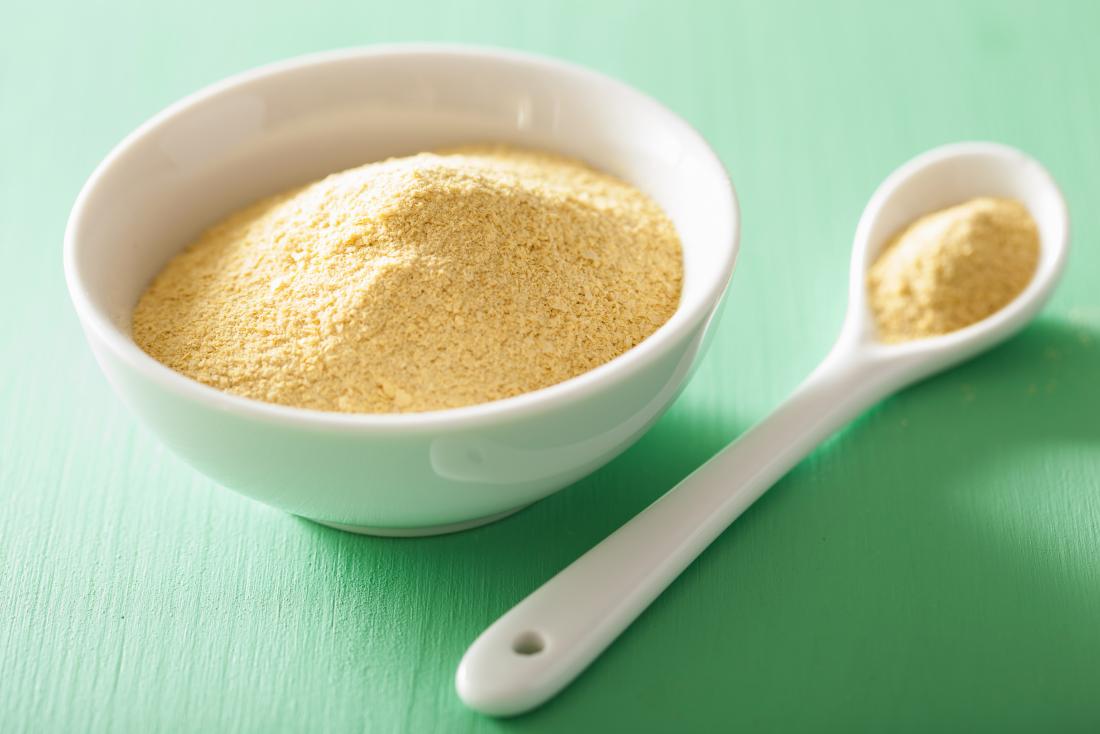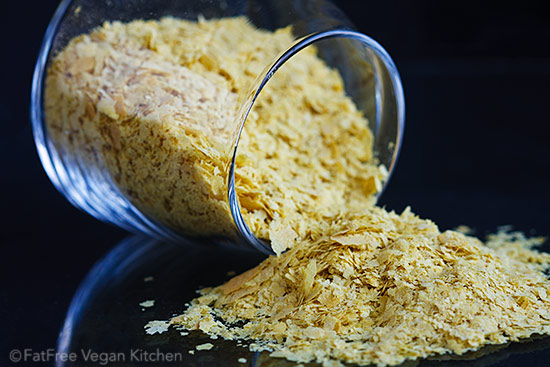No, nutritional yeast and active dry yeast are not the same. Nutritional yeast is deactivated, while active dry yeast is, well, active.
Nutritional yeast is a deactivated yeast commonly used as a flavor booster in vegan cooking, whereas active dry yeast is a live organism used to leaven bread and other baked goods, providing distinct properties and nutritional benefits. Understanding their differences is crucial for selecting the appropriate yeast for different culinary preparations.
Learn more about the unique characteristics and applications of nutritional yeast and active dry yeast in the following comprehensive discussion.

Credit: www.medicalnewstoday.com
What Is Nutritional Yeast?
Before we delve into the differences between nutritional yeast and active dry yeast, let’s first explore what nutritional yeast actually is. Nutritional yeast is a species of yeast known as Saccharomyces cerevisiae, the same type of yeast used in baking bread and brewing beer. However, nutritional yeast is processed and deactivated, making it unsuitable for baking or fermentation purposes.
Definition
Nutritional yeast is a deactivated yeast that is often used by vegans as a cheese substitute due to its rich, savory flavor. It is commonly sold in the form of flakes or powder and can be found in health food stores or online.
Nutritional Composition
Nutritional yeast is not only valued for its taste but also for its nutritional benefits. It is a complete protein, meaning it contains all nine essential amino acids that the body needs. Additionally, nutritional yeast is a good source of vitamins, especially B-complex vitamins, and minerals such as zinc, selenium, and iron.
The following table highlights the key nutritional composition of nutritional yeast:
| Nutrient | Amount per 1 tablespoon (8 grams) |
|---|---|
| Protein | 2 grams |
| Fiber | 1 gram |
| Vitamin B12 | 0.6 micrograms (25% of the daily recommended intake) |
| Zinc | 1.4 milligrams (10% of the daily recommended intake) |
| Folic Acid | 72 micrograms (18% of the daily recommended intake) |
Furthermore, nutritional yeast is often fortified with additional nutrients, such as vitamin B12, which is important for those following a vegan or vegetarian diet.
It’s important to note that while nutritional yeast provides certain nutritional benefits, it should not be relied upon as the sole source of these nutrients. A well-balanced diet that includes a variety of foods is still necessary for optimal health.
What Is Active Dry Yeast?
Active dry yeast is a form of yeast that is commonly used as a leavening agent in baking. It is made from the strain Saccharomyces cerevisiae, which is the same species of yeast used to brew beer and bake bread. The yeast is dried and granulated, making it dormant until it is reactivated by being dissolved in warm water or added directly to a dough mixture.
Definition
Active dry yeast is a form of yeast that is an essential ingredient in baking. It is commonly used to make bread rise and create a light, airy texture in baked goods.
Uses In Baking
- Primary leavening agent for bread and other baked goods.
- Provides carbon dioxide gas, leading to the expansion of the dough or batter.
- Creates a desirable texture and volume in the final baked products.
Differences Between Nutritional Yeast And Active Dry Yeast
Many people often confuse nutritional yeast with active dry yeast due to their similar names, but these two ingredients are fundamentally different in terms of their processing, function, and flavor. Understanding the disparities between the two can help clarify their distinct applications and nutritional properties.
Processing
Nutritional yeast is produced from a specific strain of yeast, Saccharomyces cerevisiae, which is cultivated on molasses and then deactivated with heat, resulting in a flaky texture. On the other hand, active dry yeast, typically used in baking, is a live yeast that is dried to remove moisture, enabling it to remain dormant until activated by warm water and sugar.
Function
Nutritional yeast serves as a popular ingredient in vegan and vegetarian cuisine, often used as a cheese substitute due to its nutty and slightly savory flavor. It also provides a rich source of protein, B vitamins, and trace minerals. In contrast, active dry yeast is primarily utilized as a leavening agent in baking, aiding in the fermentation process to help dough rise and achieve a lighter, airy texture.
Flavor
The distinct flavor profiles of these two yeasts contribute to their contrasting culinary roles. Nutritional yeast offers a distinctive cheesy, umami taste with slightly nutty undertones, making it an ideal addition to various dishes, including popcorn, pasta, and salads. In contrast, active dry yeast has a neutral flavor when inactive but contributes to the characteristic aroma and taste of freshly baked bread when activated during the proofing and baking stages.
In conclusion, while nutritional yeast and active dry yeast both share the term “yeast” in their names, their processing, function, and flavor set them apart, influencing their specific uses in culinary applications and nutritional profiles.

Credit: blog.fatfreevegan.com
Benefits Of Nutritional Yeast
Nutritional yeast offers a dairy-free cheesy flavor and is rich in nutrients like B vitamins and protein. Unlike active dry yeast for baking, nutritional yeast is deactivated and used as a savory seasoning or vegan alternative to cheese. Enjoy its unique taste in various dishes!
Source Of B Vitamins
Nutritional yeast is a powerhouse when it comes to B vitamins. It is a natural source of B vitamins such as thiamine, riboflavin, niacin, and folate. These essential vitamins play a crucial role in maintaining overall health and well-being. Thiamine helps convert food into energy, while riboflavin supports healthy metabolism. Niacin promotes proper digestion and nerve function, and folate is essential for cell growth and development. Incorporating nutritional yeast into your diet can help meet your daily B vitamin requirements.
– Nutritional yeast is a rich source of B vitamins such as thiamine, riboflavin, niacin, and folate.
– Thiamine aids in energy production, riboflavin supports metabolism, niacin helps with digestion and nerve function, and folate is crucial for cell growth and development.
Enhances Flavor
One of the most enticing qualities of nutritional yeast is its ability to enhance the flavor of various dishes. It has a cheesy, nutty taste that adds a savory element to a wide range of recipes. Whether sprinkled on top of popcorn, mixed into sauces and dips, or used as a seasoning for roasted vegetables, nutritional yeast brings a depth of flavor that is hard to resist. Its versatility and distinct taste make it a favorite among both vegans and non-vegans alike.
– Nutritional yeast has a cheesy, nutty flavor that adds depth to dishes.
– It can be used as a seasoning, sprinkled on popcorn, or incorporated into sauces and dips.
– The distinct taste of nutritional yeast makes it appealing to both vegans and non-vegans.
Vegan-friendly
For individuals following a vegan lifestyle, finding suitable ingredients to replace animal-based products can sometimes be a challenge. Nutritional yeast comes to the rescue as a vegan-friendly alternative to ingredients like cheese. Its satisfying cheesy flavor makes it an excellent option for creating vegan versions of classic dishes. Nutritional yeast is often used in vegan mac and cheese, creamy sauces, and even in vegan cheese recipes. It not only adds flavor but also provides valuable nutrients, making it a win-win for vegans.
– Nutritional yeast is a vegan-friendly ingredient that can be used as a substitute for cheese.
– It is commonly used in vegan mac and cheese, creamy sauces, and vegan cheese recipes.
– Nutritional yeast adds flavor and nutrients to vegan dishes, making it a popular choice among vegans.
How To Use Nutritional Yeast
Nutritional yeast and active dry yeast are not the same. Nutritional yeast is a deactivated yeast used by vegans to add a nutty flavor and thicken sauces, while active dry yeast is used to make bread rise. They serve different purposes in cooking and baking.
In Recipes
Nutritional yeast can be a versatile ingredient in various recipes. Here are some ways to incorporate it:
- Use as a seasoning in soups, stews, or curries for a cheesy flavor.
- Sprinkle over popcorn or roasted vegetables for added taste.
- Mix into homemade salad dressings or dips for a nutritional boost.
As A Topping
Nutritional yeast makes a delicious topping for many dishes. Try these ideas:
- Sprinkle over pasta dishes or pizza for a cheesy touch.
- Top off baked potatoes or avocado toast with a sprinkle of nutritional yeast.
- Add to popcorn or roasted nuts for a flavorful twist.

Credit: cleangreensimple.com
FAQs On Is Nutritional Yeast The Same As Active Dry Yeast
Can I Use Dry Yeast Instead Of Nutritional Yeast?
No, dry yeast cannot be used as a substitute for nutritional yeast. They serve different purposes in cooking.
Are Yeast And Nutritional Yeast The Same?
Nutritional yeast and active dry yeast are not the same. Nutritional yeast is deactivated and used for flavor, while active dry yeast is used for baking and fermentation. Although both are derived from the same yeast species, they serve different purposes.
Can I Use Active Dry Yeast Instead Of Yeast?
No, you cannot use active dry yeast instead of nutritional yeast. They are not interchangeable ingredients. Nutritional yeast is a deactivated yeast used for flavoring and thickening sauces, while active dry yeast is used to make bread rise. They may both contain “yeast,” but they are different products.
Can Nutritional Yeast Be Used For Baking?
Nutritional yeast is not suitable for baking bread like active dry yeast. It adds flavor, protein, and vitamins but cannot replace active dry yeast in recipes.
Conclusion
To sum it up, nutritional yeast and active dry yeast are not the same. Nutritional yeast is a deactivated yeast commonly used by vegans to add flavor and thicken sauces. On the other hand, active dry yeast is an activated yeast used in baking to make bread rise.
While they both contain the word “yeast,” they serve different purposes in the kitchen. So, next time you’re in the supermarket, make sure to grab the right one for your recipe.

